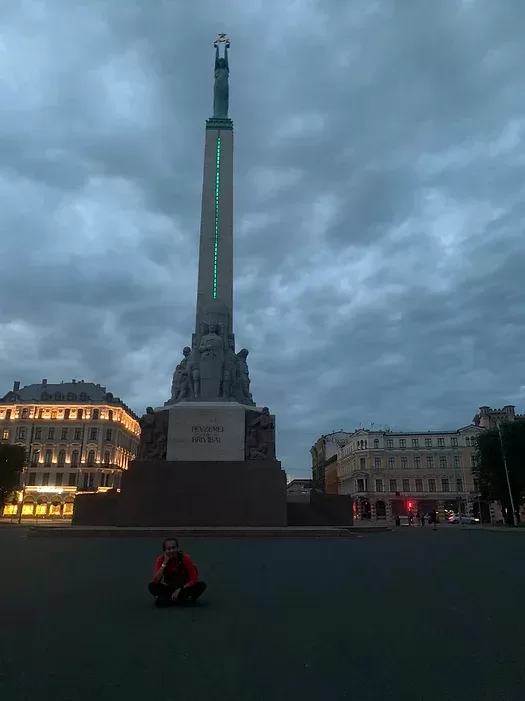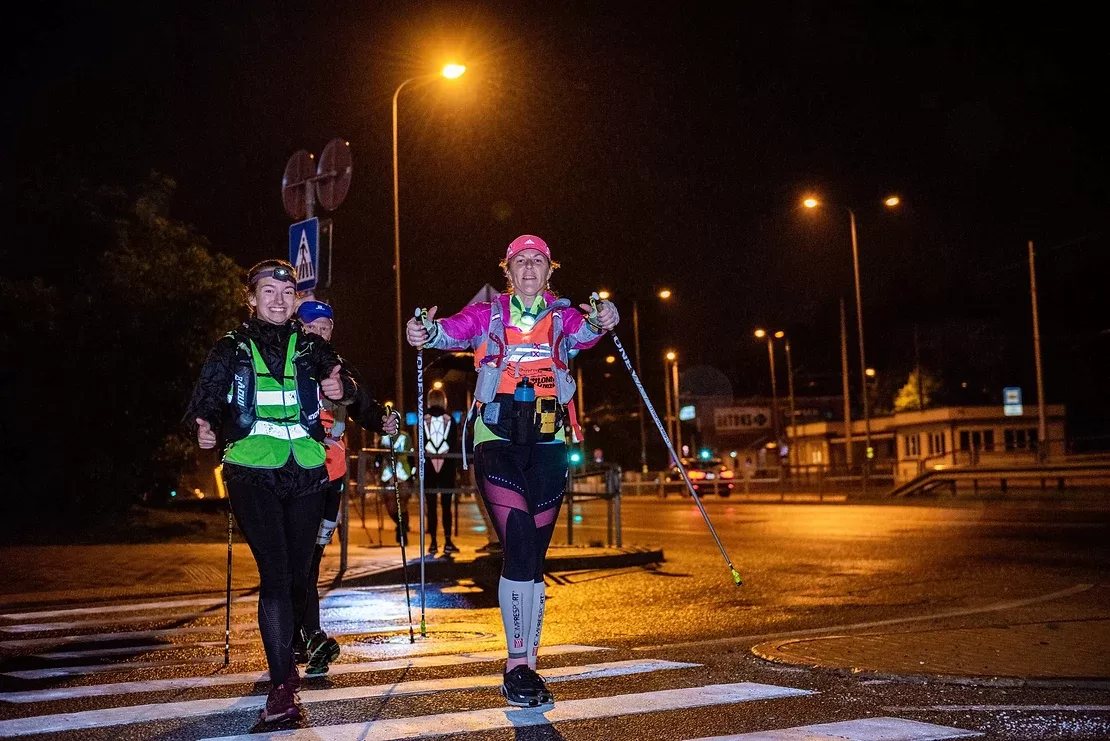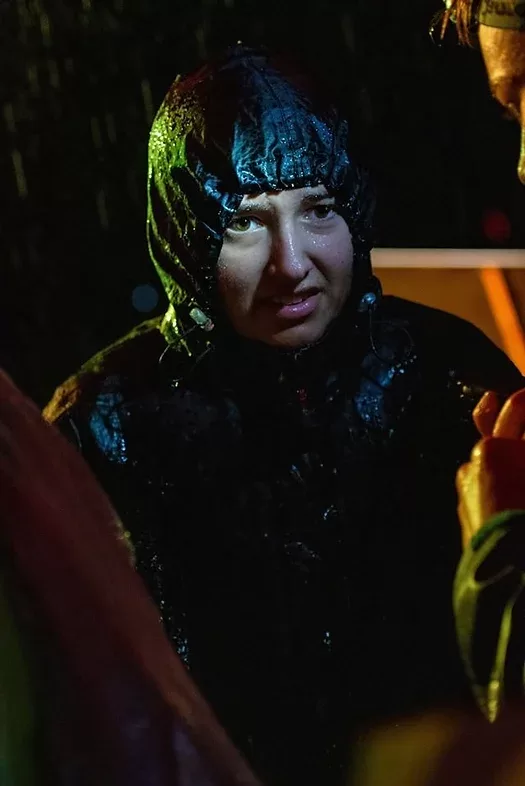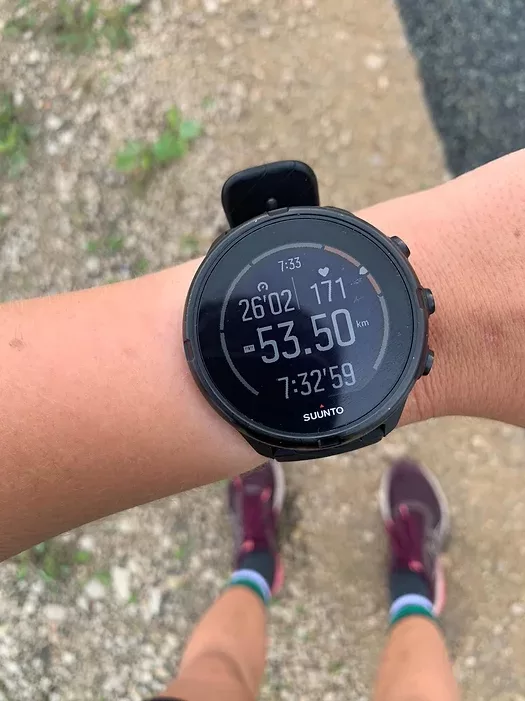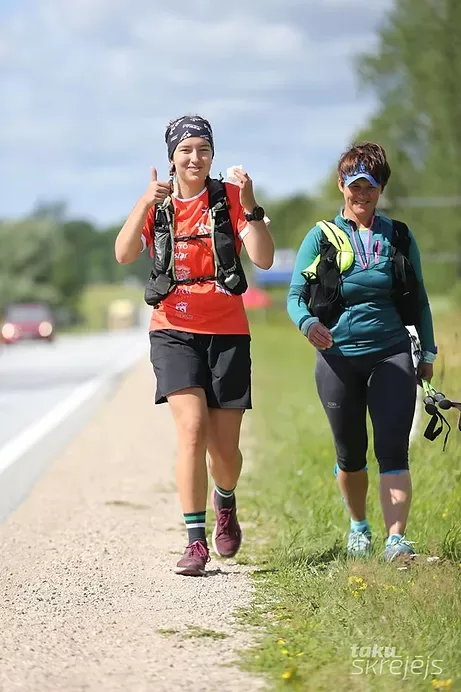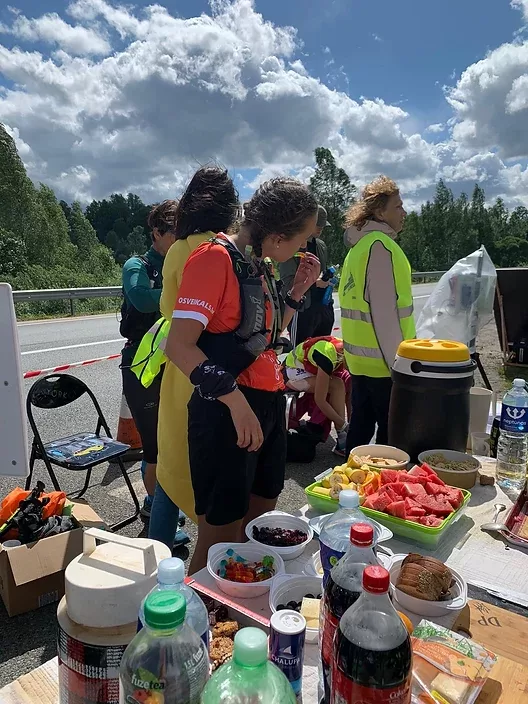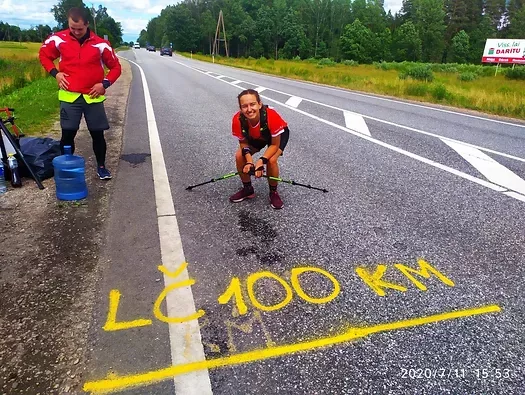Shortly after ten, we get in the car so we can register and get our number before 11:00 PM. We manage to do this successfully in the rooms of the University of Latvia’s main building, which I’ve walked through hundreds of times. I’ve managed to do a lot here while studying in my first year. After a small photoshoot, I say goodbye to my mom and brother. I stay alone. Well, sort of. Many people greet me, and we chat a little. As I experienced last year, I’m not exactly of clear mind, and at some moments, I don’t even understand what I’m saying. There’s something in my stomach that feels a bit like those butterflies from last year, but not as strong. I’m just nervous. And, of course, emotional.
Twenty minutes before midnight, we head towards the Freedom Monument, followed by speeches and chatter around us. I’m still scared, but one thing I do remember is that now I have to move towards the back of the group. I plan to walk the first 15 kilometers quickly, so there’s no place for me at the front.

